Australian Tropical Rainforest Plants - Online edition
Momordica charantia L.
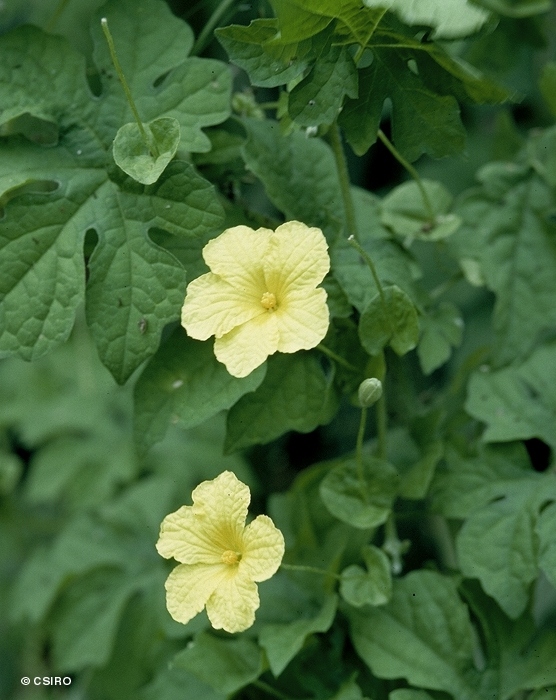
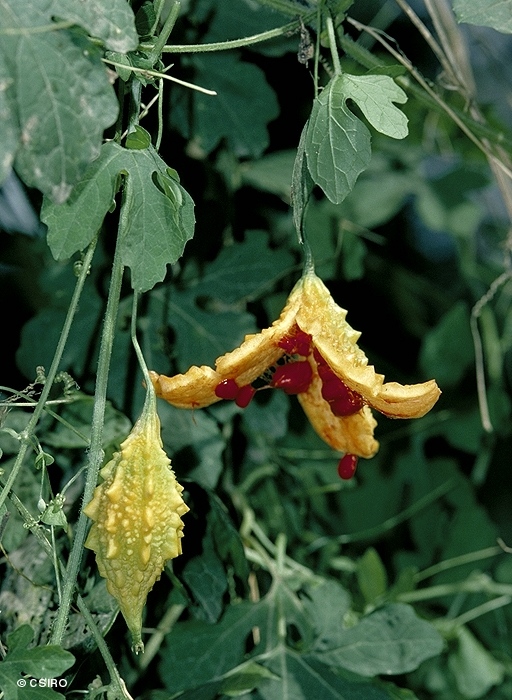
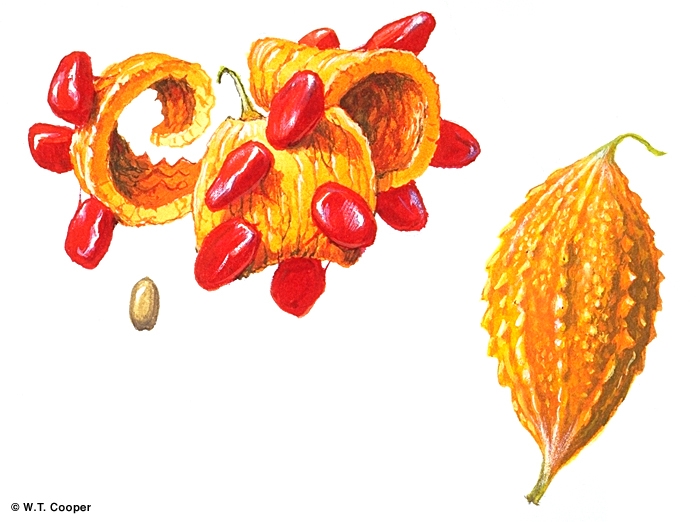
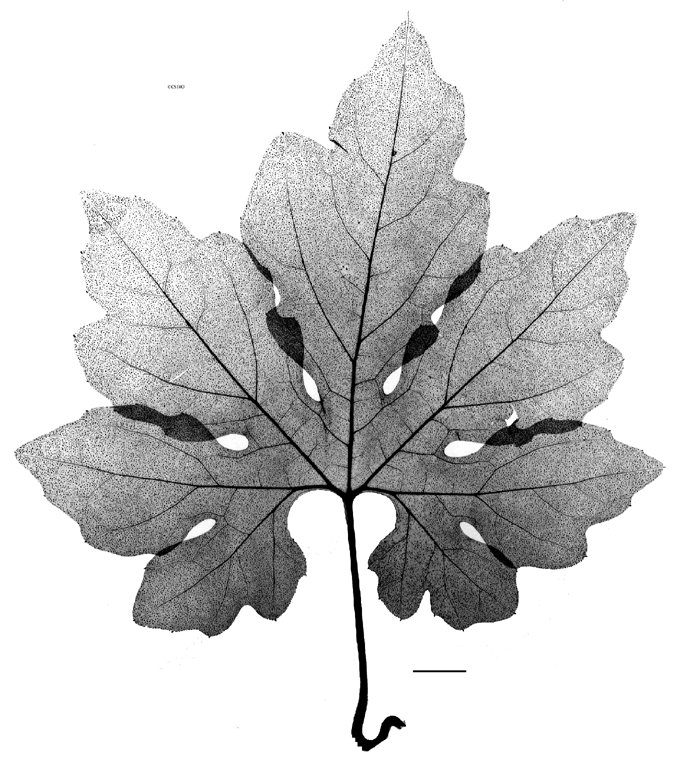

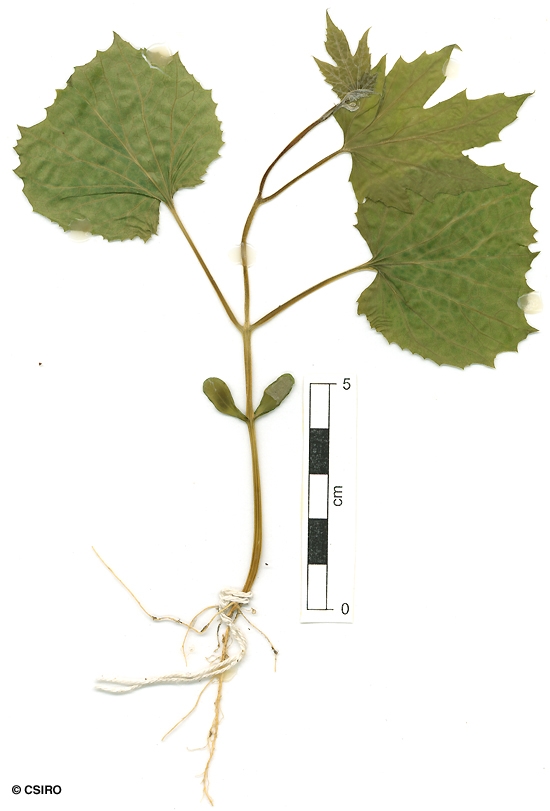
Linnaeus, C. von (1753) Species Plantarum 2: 1009. Type: Plant cultivated at Hartekamp, Holland; lecto: BM. Fide C. Jeffrey, Fl. Trop. E. Africa 31 (1967).
Gourd, Bitter; Bitter Gourd; Pear, Balsm; Balsm Pear
A slender vine not exceeding a stem diameter of 2 cm.
Leaf blades deeply 5-7-lobed, about 4-10 x 7-12 cm, petioles about 2-8 cm long. Upper and lower leaf blade surfaces clothed in scattered hairs. Leafy twigs 5-ribbed. Leaves and twigs produce a strong odour when crushed. Tendrils simple (unbranched) attached near the leaf axils.
Male flowers solitary on a long pedicel with a cordate or +/- orbicular bract (1-1.8 cm diam.) slightly below the middle. Flowers about 2.5 cm diam. Calyx lobes lanceolate, about 4-6 mm long. Petals obovate to spathulate, about 10-12 mm long. Anthers cohering, filaments free. Two anthers bilocular, one anther unilocular, locules flexuous.
Fruits about 7-10 x 2-3 cm, emitting an odour like that of rancid cheese when fully ripe. Fruit surface irregularly and longitudinally ribbed. Fruits split into 3 parts and +/- turn inside out. Seeds flat, about 9-12 x 4-7 mm with a clear fleshy border around the edge. Embryo about 8-11 mm long. Cotyledons about 8-10 x 4-5 mm. Radicle about 1 mm long.
Cotyledons sessile, thick and fleshy, spathulate to elliptic, about 11-15 x 6-7 mm, apex obtuse, base attenuate, no obvious venation. First pair of leaves opposite, blades cordate or +/- orbicular, about 4 x 3.5 cm, margins toothed with about 20 teeth on each side, petioles about 2.5-3 cm long. Second pair of leaves opposite, subsequent leaves spirally arranged. At the tenth leaf stage: leaf blade 5-7-lobed, about 2-3 x 2 cm, apex acuminate, base cordate, petiole about 5-10 mm long. Venation palmate. Upper and lower leaf blade surfaces clothed in white or pale-coloured hairs. Stems longitudinally grooved. Tendrils simple (unbranched) arising close to the point of attachment of the petiole, tightly coiled towards the apex. Plant emits a strong obnoxious odour when disturbed. Seed germination time 123 to 138 days.
An introduced species originally from India, now naturalised in NEQ, CEQ and southwards as far as south eastern Queensland. Altitudinal range from near sea level to 100 m. Grows in disturbed areas in gallery forest and lowland rain forest.
Probably originated as an ornamental vegetable or pickle. Fruits exceedingly bitter when eaten. This species is suspected of being poisonous to some extent but the evidence is not conclusive.
Seeds are a laxative (Austin, D. F. 1998. Poisonous Plants of Southern Florida).
This species may have medicinal properties. This species has been used medicinally in India and Puerto Rico. Cribb (1981).





